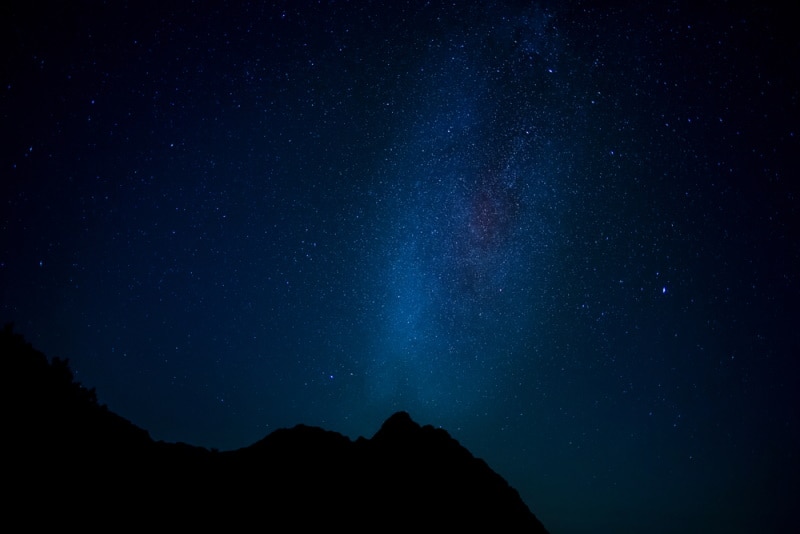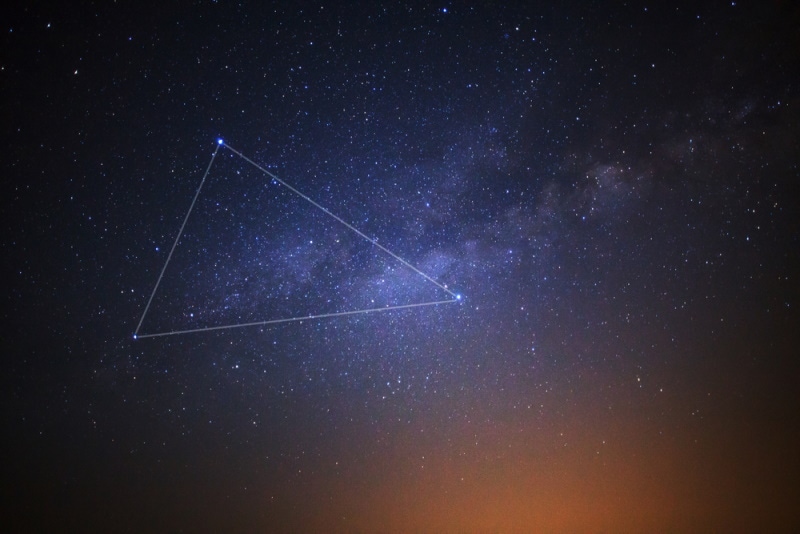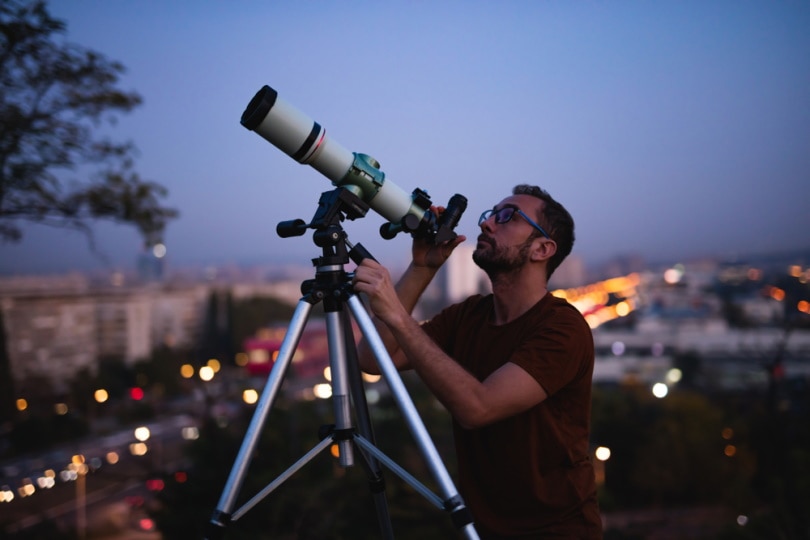10 Interesting Cygnus Constellation Facts, Myths & FAQs
Last Updated on

The Cygnus constellation is one of the 88 modern constellations.1 Its name is Latin for “swan.” What makes Cygnus so interesting is it’s associated with Greek mythology.
Over the years, many astronomers and researchers have made several interpretations of the swan constellation. Below, we discuss some of these myths and list specific facts about the constellation.

Top 10 Cygnus Constellation Facts:
1. Discovery of Cygnus
Ptolemy, an astronomer in the 2nd century, listed 48 constellations. One of these was Cygnus, the swan.
Over the years, astronomers have learned more about the constellation, such as its stars and the deep-sky objects it contains.

2. Stars of Cygnus
Every constellation comprises stars, but some have more than others. Cygnus has six stars that make up its shape. These include Sadr, Deneb, Aljanah, Albireo, Fawaris, and Azelfafage.
3. Cygnus in Hinduism
In Hinduism, Brahmamuhurtha is the time of the day lasting for one Muhurta, which is 48 minutes. The period is considered auspicious for performing rituals and meditating on the god Brahma.
Brahmamuhurtha comes from the two words “Brahma” and “Muhurta.” “Brahma” is the Hindu god of creation, and “muhurta” means a period of time. The 48 minutes last from 4:24 AM to 5:12 AM.
During this time, the Cygnus constellation is in the eastern sky. It’s correlated with Brahmamuhurtha, which roughly translates to the moment of the universe.

4. Cygnus and Islamic Astronomy
Islam and astronomy have always been closely linked. Muslims have long been active in astronomy, and Muslim scientists made many important astronomical discoveries.
Deneb, a star of the Cygnus constellation, has a name of Arabic origin derived from “Dhanab ad-Dajājah,” meaning “the hen’s tail.” Since Deneb forms the tail of the constellation, the term is apt. Albireo, the small star, makes the head.
5. Cygnus in Greek Mythology
The Cygnus constellation is commonly associated with the story of Zeus and his lover, Leda. In Greek mythology, Zeus took the form of a swan and seduced Leda. From their union, Helen of Troy and Polydeuces were born. At the same time, Leda bore Clytemnestra and Castor, her husband Tyndareus’s children. Many paintings and sculptures depict this story, one of the most famous being Leda and the Swan by Michelangelo.
Another Greek myth associated with the swan is that of Orpheus. He was a musician, poet, and prophet who could charm all living things and even objects with his music. A snake bit his wife, Eurydice, who died as a result. Orpheus went to the underworld to try and bring her back. He played his music and charmed Hades and Persephone.
They agreed to let Eurydice return to the world of living on one condition: Orpheus could not look back until they had both reached the surface. Orpheus agreed, but just before they reached the top, he turned around to look at Eurydice. She vanished back into the underworld, and Orpheus was left alone.
After his death, he transformed into a swan. Greek mythology says that he is in the sky as the constellation Lyra.

6. Cygnus in Chinese Mythology
The Chinese associate Cygnus with the Que Qiao magpie bridge. The story follows Niu Lang and Zhi Nu, two lovers who could not be together because Zhi Nu was a fairy.
The Goddess of Heaven forbade them to be together. However, when she discovered they were secretly married, she created a river in the sky to separate them.
Zhi Nu was also taken away by the goddess. Niu Lang, her husband, went to heaven, taking their two kids along, hoping to unite with his lover. But the goddess did not allow the lovers to be together. The myth says that every year all magpies of the world form a massive bridge over the river to help unite the lovers.
Cygnus is a representation of the magpie bridge.
7. Two Nebulae in Cygnus
A nebula is a cloud of dust and gas in space. There are two nebulae located in the Cygnus constellation: the North American Nebula and the Veil Nebula.
The North American Nebula is located in the northern part of the constellation. It gets its name from its shape, which is said to resemble the continent of North America.
Meanwhile, the Veil Nebula is located south of Epsilon Cygni, an eastern star in the constellation.

8. Deep-Sky Objects Around Cygnus
Many deep-sky objects surround the Cygnus constellation. These are best seen with a telescope. Besides nebulae, the constellation also has open clusters and double stars.
The best time to view these objects is during the autumn and winter months in the Northern Hemisphere.
9. Cygnus in Summer Triangle
The Summer Triangle is a vast asterism in the northern sky. It is formed by three bright stars: Altair, Vega, and Deneb. Pilots in the US Airforce also call it the Navigator’s Triangle since it can be used to find the north at night.
The three stars comprising the Summer Triangle are some of the brightest in the sky. Altair, the brightest star in Aquila, is an A-type main sequence star with an apparent magnitude of 0.76.
Meanwhile, Deneb is from the Cygnus constellation. It’s a blue supergiant, about 200,000 times more luminous than the sun. Meanwhile, Vega is the 5th brightest star in the sky, with an apparent magnitude of 0.03. It’s a white main sequence star 25 light years away from the sun.

10. Cygnus in Hercules Family
The Hercules family of constellations is named after the hero in Greek mythology, Hercules. These constellations are all located in the Northern Hemisphere and are spread out around the north celestial pole.
Cygnus is a member of the Hercules family. Other members include Crater, Crux, Hydra, Centaurus, Lyra, Lacerta, and Hercules.
Cygnus’s closest neighbors are Lacerta, Lyra, Pegasus, and Cepheus. These constellations are also associated with myths and legends.
Lyra, for instance, is associated with the story of Orpheus and Eurydice. Meanwhile, Cepheus was the husband of Cassiopeia, who was turned into a constellation after she boasted about her beauty being greater than that of the Nereids.
How to Find Cygnus in the Sky
When viewing constellations in the sky, you can imagine lines connecting the stars to form patterns. In the case of Cygnus, the Northern Cross, these imaginary lines would form a cross shape.
You should search for Cygnus in the sky in summer. The constellation will be on the eastern horizon after the sun sets.
The brightest star in Cygnus is Deneb, which forms the tail of the swan. It will look like the top half of the “T.” As the night goes on, it’s possible to trace the constellation’s body and wings. The head of the swan is formed by Albireo, which is the double star.
Since Cygnus also forms the Summer Triangle, it’s possible to use the other two stars in that asterism—Vega and Altair—to find Cygnus. Altair will be to the south of Vega, and Cygnus will be north of Vega. After you locate Cygnus, you’ll also be able to find the Milky Way. Look along the constellation’s length. It will lead to the hazy cloud of the Milky Way.

Here are some tips to make sure you find the constellation:
- Choose a spot distant from the city lights. Light pollution from the city can make it harder to see the stars.
- Make sure you have an unobstructed view of the horizon. If you’re too close to the tall buildings, you’ll have a hard time finding the constellation.
- Your eyes might take up to 30 minutes to adjust fully. Take your time instead of giving up too quickly.
You can also reach out to an astronomy club in your area. Members of these clubs are usually willing to help people locate constellations in the sky.

Conclusion
With an 804-square-degree area, Cygnus is the 16th largest constellation. It has six stars, with Deneb being the brightest. Due to its location in the Northern sky, it is visible throughout the world.
Cygnus also forms the Summer Triangle with Vega and Altair. Many travelers and sailors use the triangle to find the north at night.
Cygnus is associated with myths and folklore in many cultures. Some of them include Greek, Hindu, and Chinese mythologies. You can see Cygnus in the sky during summer. However, the best time to look for it is after sunset.
Featured Image Credit: Axel Redder, Shutterstock
About the Author Jeff Weishaupt
Jeff is a tech professional by day, writer, and amateur photographer by night. He's had the privilege of leading software teams for startups to the Fortune 100 over the past two decades. He currently works in the data privacy space. Jeff's amateur photography interests started in 2008 when he got his first DSLR camera, the Canon Rebel. Since then, he's taken tens of thousands of photos. His favorite handheld camera these days is his Google Pixel 6 XL. He loves taking photos of nature and his kids. In 2016, he bought his first drone, the Mavic Pro. Taking photos from the air is an amazing perspective, and he loves to take his drone while traveling.
Related Articles:
15 Crucial Facts About Ultraviolet Rays & the Sun
What Constellation Is Spica In? The Interesting Answer!
10 Interesting Leo Constellation Facts, Myths, and FAQs
15 Interesting Pegasus Constellation Facts, Myths, and FAQs
6 Interesting Sagittarius Constellation Facts, Myths, and FAQs in 2024!
What Are Constellations? Where Did They Come From?
8 Interesting Libra Constellation Facts, Myths, and FAQs
What Is Infrared Radiation? Science-Based Facts & FAQ
